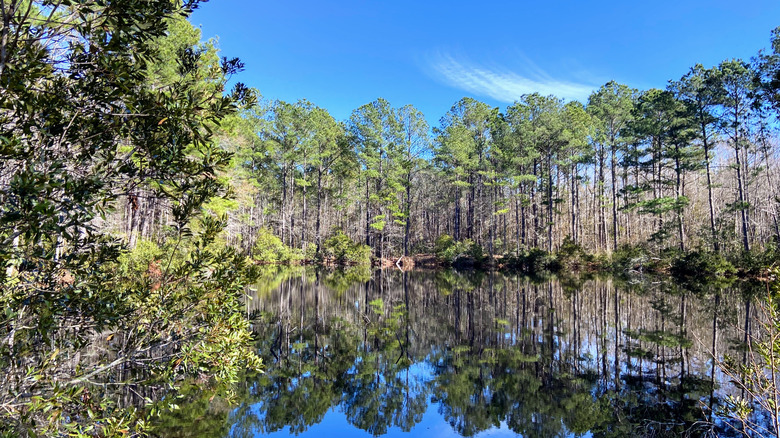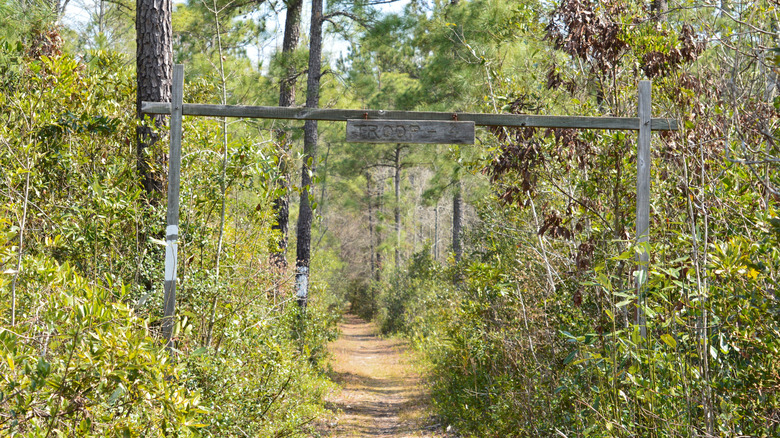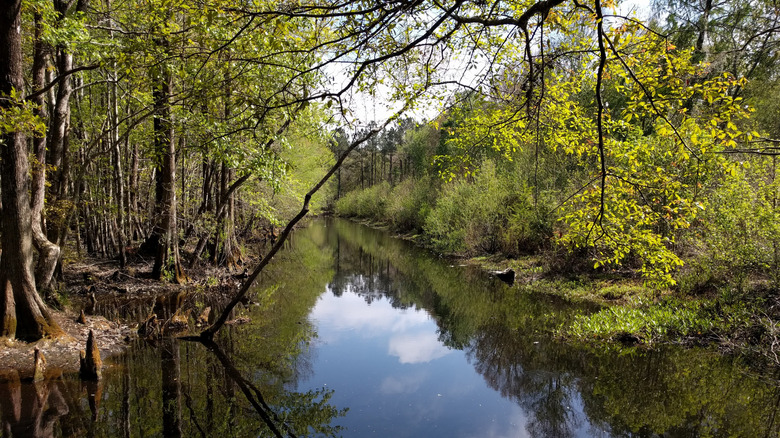South Carolina's Underrated National Forest Is A Wonderland Of Trails, Paddling, And Coastal Ecosystems
South Carolina is a haven for outdoor and nature enthusiasts, and the next national forest you need to explore is none other than the Francis Marion National Forest. One day isn't enough to explore everything that you can find in this hidden gem. Spanning 259,000 acres, the forest is home to resident and migratory birds; wildlife such as alligators, snakes, and frogs; and a diverse plant and tree life.
The area is also famed for having the Sewee Shell Mounds, one of the oldest shell rings in the country. These are rings of shells that were built 4,000 years ago by the Sewee Indians that formerly occupied the area. There is a self-guided trail called the Sewee Shell Mound Interpretive Trail that leads you through it, where you'll pass through diverse ecosystems of plants and wildlife present in the forest. Aside from the mound, the park also offers a ton of recreational activities that will keep you busy for days. You can go hiking, biking, horseback riding, paddling, and fishing. There are also historical sites and camping areas.
The Francis Marion National Forest covers the towns of Awendaw, a secret nature-based town; Huger; Jamestown; and McClellanville, a seaside town with unmatched fresh seafood. The forest is also an hour away from Charleston, a blend of European appearance with Southern charm.
Wander the wonderland of trails in Francis Marion National Forest
From easy hikes to challenging routes, there are many trails to choose from in the vast expanse of the national forest. One of the most popular trails is the Sewee Shell Mound Interpretive Trailthat takes you through three plant communities, including the 4,000-year-old shell mound. It's considered an easy trek and takes about 20 minutes to finish the loop.
Another popular trail is the Palmetto Trail. There are different passages for this trail, with the Awendaw Passage being a shorter trail at 9.5 miles that connects to the much longer 47-mile Swamp Fox Passage. The shorter Awendaw Passage is an out-and-back trail and is the last part of the Palmetto Trail. It takes a scenic route and can be done in under three hours of hiking.
There's another easy trail that will guide you through some historic stops, offer up some scenic views, and provide lots of opportunities for wildlife watching. Head to I'on Swamp Interpretive Trail, a 1.9-mile loop trail that only takes about 30 minutes to do. You'll see historic embankments and ditches that were used for making rice, and as the name suggests, you'll pass through swamps and wetlands, and maybe even see an alligator pass by. For more challenging hikes, consider the Jericho Horse Trail at 17.9 miles and the Swamp Fox Passage at the Palmetto Trail.
Enjoy the wilderness areas with paddling and wildlife viewing
There are four wilderness areas in the national forest, and one of which is the Wambaw Creek. The Wambaw Creek Wilderness Canoe Trail is the perfect place to go paddling with views of hundred-year-old cypress trees and lots of wildlife to see. There are a couple of paddling guided experiences you can take, but it's generally an easy ride that typically takes about two to three hours. You can either start or end in Still Landing or Echaw Road to Elmwood Landing, depending on the tides. You can also go canoeing or kayaking on the lakes and rivers in the forest.
The forest is also abundant with wildlife, including plants, birds, and reptiles. The forest itself is a haven for birds, with about 300 species of birds that have been seen here. You're more likely to spot some autumn and spring migratory birds. And yes, there are also alligators, snakes, frogs, and lizards to be found in the wilderness areas, with gators being most active during the summer season.
If you're planning a multi-day adventure, there are camping spots all over the area. There is primitive camping at Elmwood or at the Buck Hall Recreation Area. At Buck Hall, there is a $20 daily tent camping fee at the time of writing. Make sure not to forget your bug spray, as mosquitoes are rampant in the area, most especially from April through November in the salt marshes.


